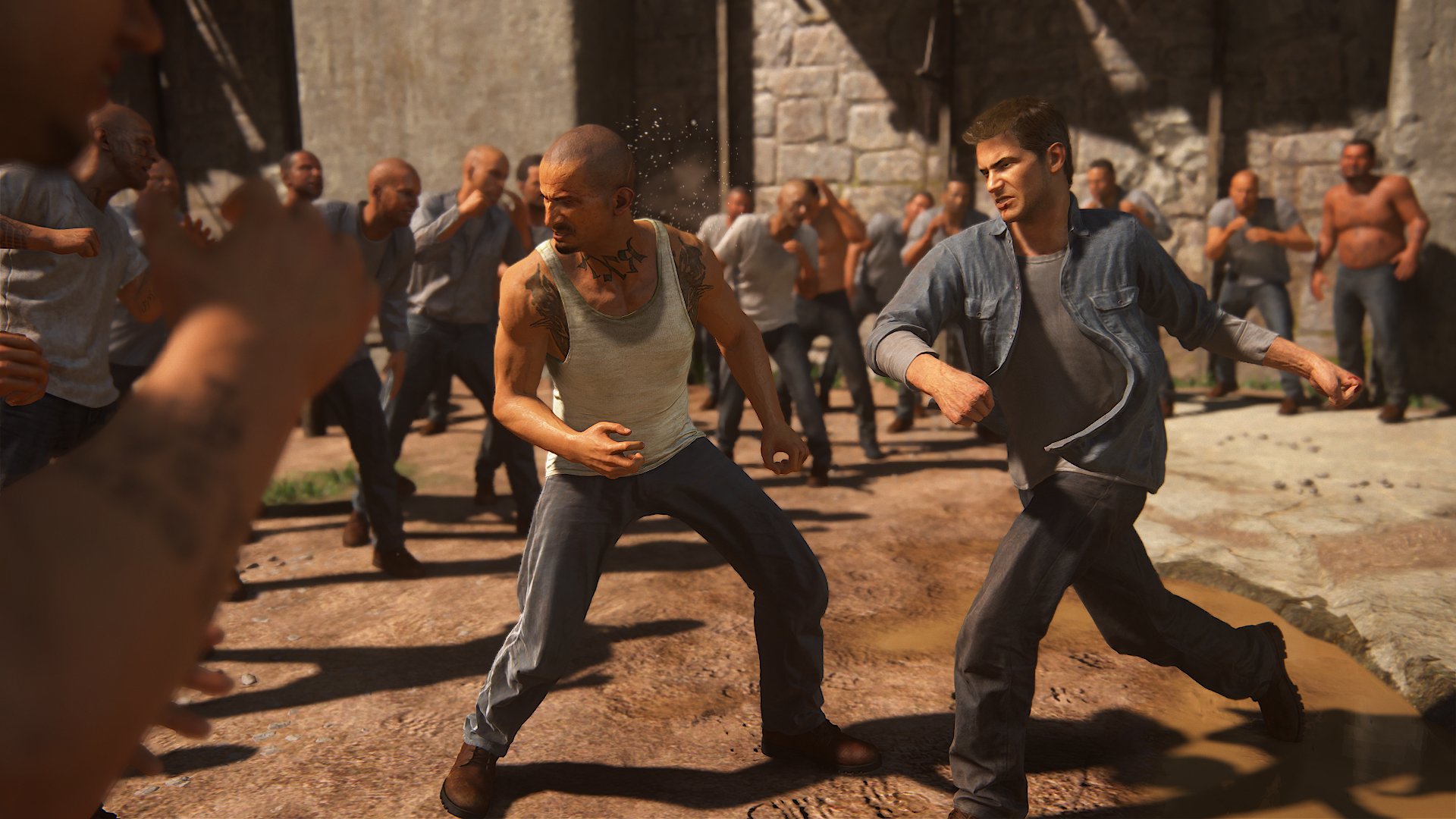What makes a truly great video game trailer? It's you...
Video games are built on ideas. Before a single line of code is written, before a polygon is rendered, before a voxel is… whatever it is that happens to voxels... video games are birthed in the minds of their designers. Whether it’s a eureka moment in a pitch meeting, or a profound insight in traffic, video games begin life as fragile, intangible things, little more than the firing of a sequence of neurons.
And while video games are art (glad we’ve matured out of that discussion), they are usually very commercial art. These ideas, sometimes so nascent they barely have a physical form to nest in (as in the case of a fresh Kickstarter campaign), need salespeople to bridge the gap between creator and audience. And these salespeople need tools, powerful, versatile tools to kidnap our imaginations for a handful of moments and, eventually, pry open our wallets and liberate our cash.
And so we have the modern video game trailer, a sleek and refined beast, the product of countless creative and calculating minds bending themselves to a single task: to sell an idea.
There’s been a great deal of conversation about trailers lately, mostly about the products they represent, but also about how they showcase those products. What are their operating principles? What are their priorities, and what do they assume about us, their audience? And most importantly, what are they actually trying to sell us on, and what are they avoiding?
Spend a few afternoons completely immersed in video game trailers, and you quickly come to one important realization. The way trailers are built reveals a great deal about the sort of game they’re selling. Look away from the content of a trailer and study the frame, and you notice some important facts about how trailers are structured to suit the genre and theme of the game they represent.
Let’s look at two popular, contemporary examples that sharply illustrate this point. On the one hand we have the record-breaking trailer for the upcoming WW1 shooter Battlefield 1, and on the other the E3 reveal trailer for Naughty Dog’s magnum opus, Uncharted 4.
Battlefield 1
Heavy, pulsing, licensed music, explosions, chaotic action, brutal violence, and almost no dialogue. The Battlefield 1 trailer isn’t interested in telling us anything about the game’s story or characters, and only pays cursory service to its setting. It wants our hearts pounding, adrenaline pumping, it wants us to know Battlefield 1 is a game about intense action and over-the-top set pieces, perhaps a necessity when you’re marketing a game set in a war known for its plodding trench warfare and impersonal violence.
Sign up to the GamesRadar+ Newsletter
Weekly digests, tales from the communities you love, and more
This trailer lets us know immediately what it wants us to care about and is similarly transparent about what we can hand wave away. You can practically hear a PR rep saying “yeah, there’s a story, yadda yadda yadda. Look at these tanks blowing shit up!” It also eschews gameplay to focus on a pure, cinematic distillation of explosive action.
In some ways, this sort of trailer is reminiscent of one for a Hollywood action movie, except even the most action-oriented movie trailer offers us generous portions of plot. While a film’s main offering is the story it’s telling, video games can give us experiences that are more exclusively focused on playing and interacting, so you see a trend in action game’s trailers away from any sort of narrative exposition and towards the kind of bombastic, protracted climax we see here.

This trailer and its ilk make some clear assumptions about the people likely to buy a modern action game, especially a console shooter. For one, narrative focused campaigns are a secondary consideration; if players do invest any of their time in the campaign, it’s not to be told a nuanced story or to be vividly reminded of the horror of war. It’s to blow stuff up in spectacular fashion and be taken on a theme-park tour of war and conflict.
The core lesson for anyone carefully studying the marketing for games like Battlefield 1 (and its most obvious competitor, Infinite Warfare), is that trailers like this capitalize on that most basic promise of video games: making players feel like badasses, heroes, people whose impact on the world is immediate, dramatic, and undeniable.
Uncharted 4
At first glance, the Uncharted trailer looks like a completely different animal. It’s quiet, tastefully lit and scored, and focuses on two characters and their implied relationship. It gives us a slice of an experience that’s easy for a viewer to elaborate on in their imagination. Evocative in the purest sense of the word, it manages to convey a rich background and well drawn characters with only a few, deftly chosen elements. There’s a careful focus on facial expression, tone of voice, and body language, human elements that immediately communicate that Uncharted 4 is a game about people and their lives, not some vast, dehumanizing conflict.
This is a trailer that sells us on feeling, human connection, relationships, interpersonal drama. Like other trailers for character focused adventure games, RPGs, and ‘walking simulators’ in the vein of Gone Home or Firewatch, its goal isn’t to advertise the compelling gameplay on offer, but to invite us to disappear into a world and a story.
Through its presentation and its attention to detail (setting the trailer at twilight, the hints of grey in Nathan’s hair), this trailer subtly flatters us, tells us that Uncharted 4 is meant for a discerning audience, one that cares about quality storytelling, production values, highly paid voice talent. At the same time, it assumes that its audience is a patient one, that the people buying and playing these story-driven games will appreciate a slice of the game in which very little of consequence actually happens. Contrast this with the Battlefield trailer, where every moment overflows with action and suggests it’s intended for an audience seeking immediate gratification; an audience that’s inundated with media and may turn to something else at the most slender pause.
So what it is that trailers are trying to sell us? Ultimately, they’re selling us ourselves.
Or rather, it’s a carefully managed and idealized version of ourselves that we want to see reflected in the games we play. The suite of Persona 5 trailers emphasize how hip, stylish, how niche its audiences are. The Final Fantasy 15 offerings give us a mirror that reflects our adventurous spirit, our boundless ability to triumph over adversity, our humor in the face of life’s grimmest moments. Homefront and The Division make us patriots, reclaiming our homes from the vague menace of some foreign other.

As video game trailers grow up alongside their medium, as they become honed and trim and an artform unto themselves, they’re less about the content and more about the viewer. While they still strive to sell an idea, that idea is less the few minutes of the game they’re showing and more the idea of self. They’re packaging and beautifying identity, and selling it off in shrinkwrapped, $60 parcels.
To be clear, there’s nothing underhanded or immoral about this sort of marketing. It’s what all good entertainment strives for, not to let us escape but to let us feel less like escaping. Sure, it may immerse us in a different time, a different setting, maybe a different world, but in the end it’s still us being immersed. And if it’s a slightly better, slightly more noble us, what’s the harm in that?
Alan Bradley was once a Hardware Writer for GamesRadar and PC Gamer, specialising in PC hardware. But, Alan is now a freelance journalist. He has bylines at Rolling Stone, Gamasutra, Variety, and more.



